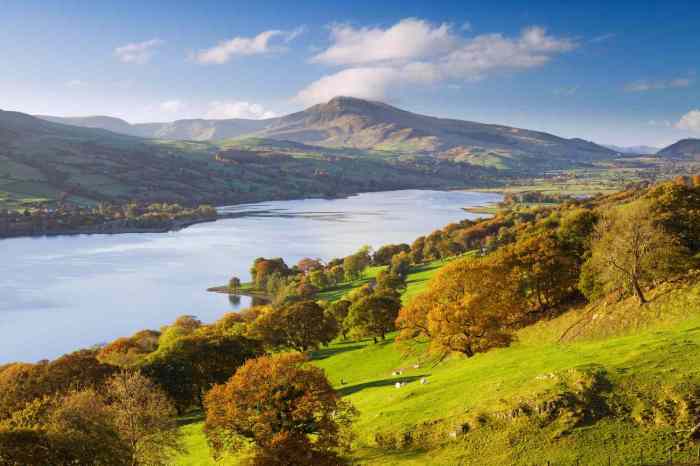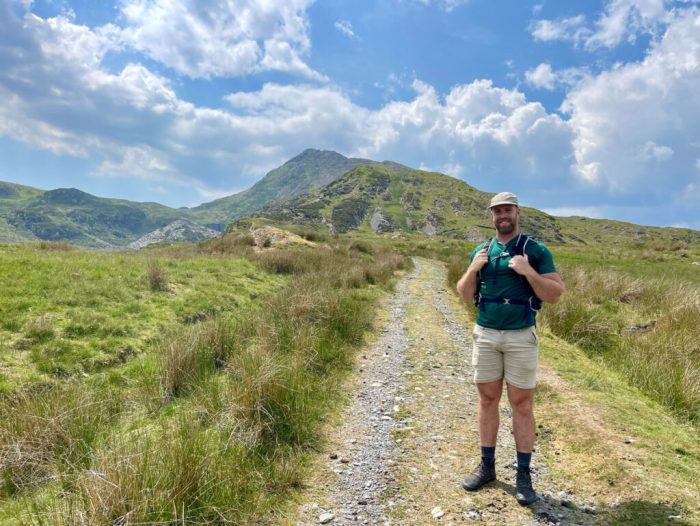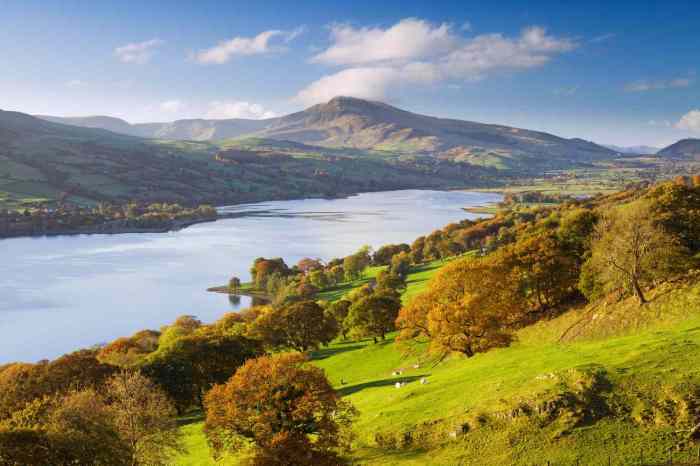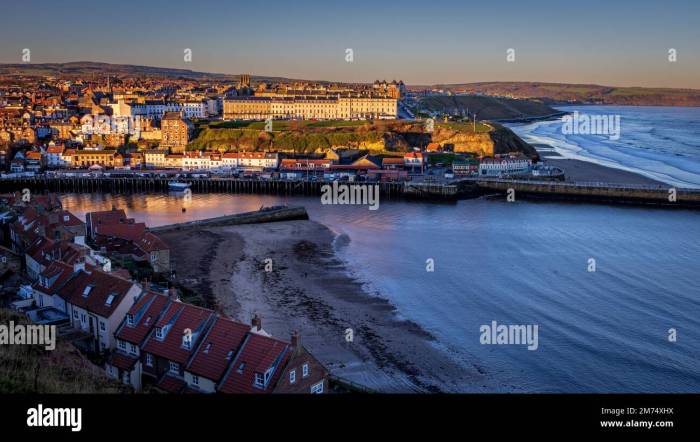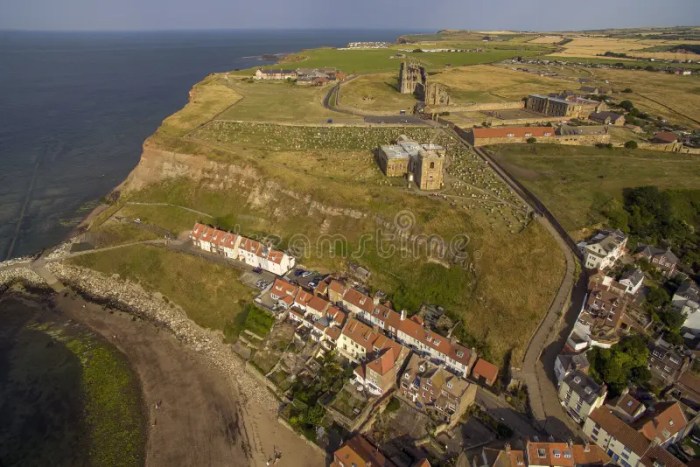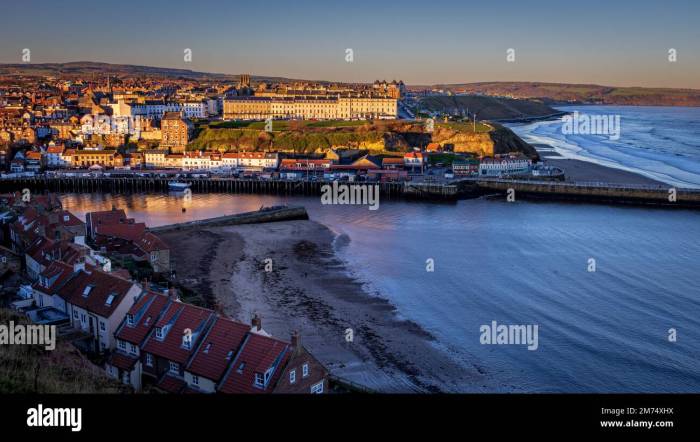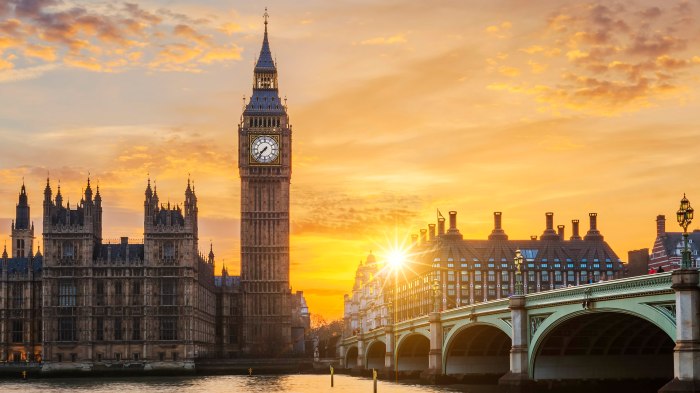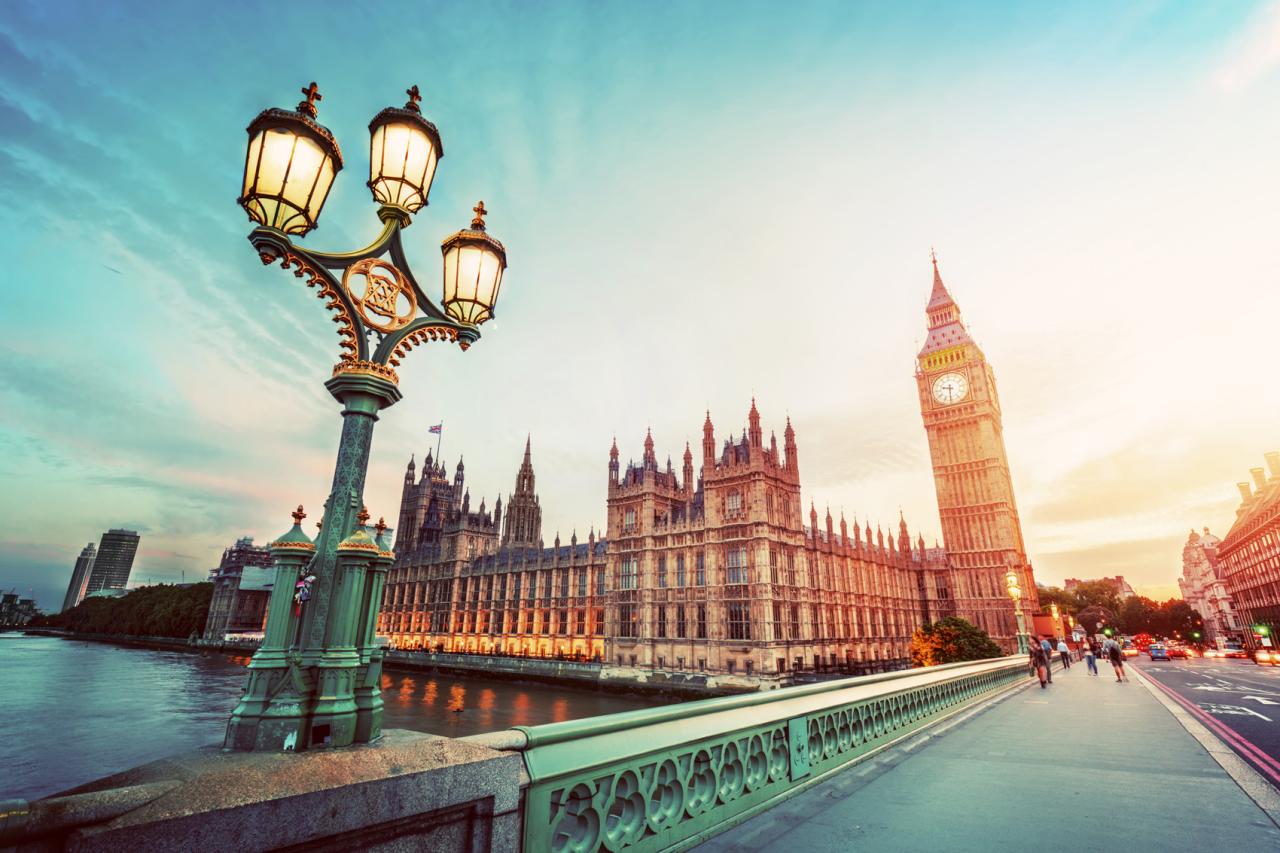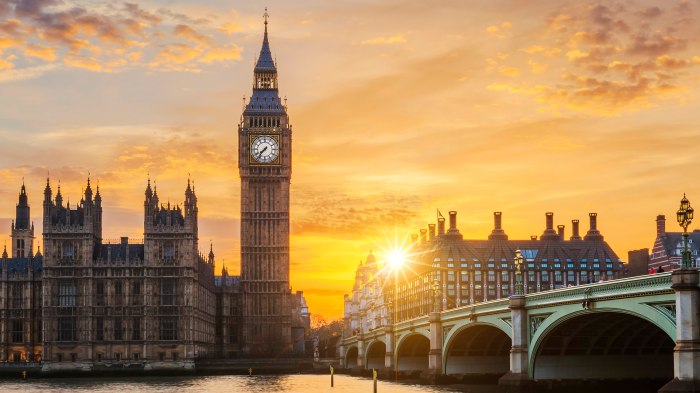Guide to Eryri Snowdonia National Park immerses you in the breathtaking beauty and rich history of this remarkable UK national park. Discover its diverse landscapes, from towering mountains to serene valleys, and learn about the fascinating wildlife that calls this region home. Prepare for unforgettable adventures with detailed hiking guides, accommodation recommendations, and insights into the area’s captivating culture and history.
Get ready to explore!
This comprehensive guide provides a thorough overview of everything you need to know for a fantastic trip to Eryri Snowdonia. From planning your itinerary to finding the perfect hiking trails, we’ve covered it all. We delve into the park’s stunning natural wonders, explore the local culture, and provide practical tips for your adventure. Discover the best times to visit, essential gear, and top-notch food and drink recommendations.
Get ready to experience the magic of Eryri Snowdonia!
Introduction to Eryri Snowdonia National Park
Eryri Snowdonia National Park, a breathtaking expanse of natural beauty in North Wales, captivates visitors with its dramatic mountains, lush valleys, and rich history. From the iconic peaks of Snowdon to the serene glacial lakes, the park offers a diverse range of experiences for outdoor enthusiasts and nature lovers alike. This region’s profound historical and cultural significance, coupled with its remarkable ecological importance, makes it a truly special place.This exploration delves into the key features that define Eryri Snowdonia, showcasing its geographical wonders, historical context, cultural significance, and the biodiversity that thrives within its borders.
A comparative analysis with other UK national parks further highlights the unique characteristics of this remarkable region.
Key Features and Attractions
Eryri Snowdonia boasts a captivating array of attractions, catering to diverse interests. The park’s most prominent feature is its dramatic mountain range, including Snowdon, the highest peak in Wales. This mountainous terrain offers challenging hikes and breathtaking vistas, drawing mountaineers and walkers from around the world. The park also includes numerous glacial lakes, tranquil valleys, and cascading waterfalls, providing a peaceful contrast to the grandeur of the mountains.
Visitors can explore ancient woodlands, discover historical sites, and immerse themselves in the rich cultural heritage of the region.
Historical and Cultural Significance
The region’s historical significance is deeply intertwined with its natural beauty. The area has witnessed human activity for millennia, evident in archaeological discoveries and ancient settlements. Eryri Snowdonia holds cultural importance for the Welsh people, representing a significant part of their national identity. Traditional Welsh customs and practices are still evident in the region, offering a glimpse into the area’s rich heritage.
Just finished sketching out a fantastic guide to Eryri Snowdonia National Park – it’s packed with hiking trails and breathtaking views. While exploring the stunning landscapes, I stumbled across news about North Devon being designated a world surfing reserve, north devon is now a world surfing reserve – a cool addition to the UK’s outdoor adventures! Back to the guide – I’m so excited to share all the tips and tricks for navigating this incredible national park.
Tales of local legends and folklore further enrich the region’s mystique, adding to the allure of this historical landscape.
Geographical Characteristics
Eryri Snowdonia is defined by its striking geographical features. The park’s topography is dominated by mountains, including the iconic Snowdon, which stands as a testament to the region’s geological history. Valleys, carved out by glaciers over millennia, create a stunning contrast to the rugged peaks. The park’s varied landscapes, ranging from high-altitude moorland to lush lowland meadows, offer a captivating panorama of natural beauty.
The park’s glacial history is also apparent in its numerous lakes, rivers, and waterfalls, sculpted by the forces of nature.
Ecological Importance and Biodiversity
Eryri Snowdonia is a haven for a remarkable array of plant and animal life. The park’s diverse habitats support a rich tapestry of flora and fauna, including rare and endangered species. From the high-altitude moorland to the lower-lying woodlands, the park’s ecological importance is undeniable. The park’s varied elevations and microclimates support a wide range of species, contributing to the overall biodiversity of the region.
Conservation efforts are crucial in preserving the unique ecosystem of Eryri Snowdonia.
Comparison with Other UK National Parks
| Feature |
Eryri Snowdonia |
Lake District |
Peak District |
Dartmoor |
| Highest Point |
Snowdon (1085m) |
Scafell Pike (978m) |
Kinder Scout (636m) |
High Willhays (621m) |
| Primary Landscape |
Mountains, glacial lakes, valleys |
Mountains, lakes, valleys |
Moorland, hills, valleys |
Moorland, tors, valleys |
| Biodiversity |
High, diverse range of species |
High, particularly in lakes and valleys |
Moderate, varied habitats |
Unique moorland flora and fauna |
| Cultural Significance |
Strong Welsh identity, historical sites |
Strong English/British identity, historical sites |
Historic industrial heritage |
Ancient folklore and legends |
This table provides a concise overview of Eryri Snowdonia’s key characteristics compared to other UK National Parks. It highlights the unique combination of features that distinguish Eryri Snowdonia, particularly its dramatic mountains and rich Welsh heritage. Each park possesses its own distinct qualities and attractions, reflecting the varied landscapes and histories across the UK.
Hiking and Outdoor Activities
Eryri Snowdonia National Park offers a wealth of opportunities for hikers and outdoor enthusiasts of all levels. From gentle strolls to challenging climbs, the park caters to diverse interests and abilities. The varied terrain, stunning scenery, and abundance of wildlife make it a truly unforgettable destination.The park’s trails are well-maintained and offer breathtaking views of the surrounding peaks, valleys, and lakes.
Whether you’re seeking a challenging ascent to a summit or a relaxing walk along a scenic waterway, Eryri has something for everyone. Planning your adventure beforehand, considering the weather conditions, and adhering to safety guidelines are crucial for a safe and enjoyable experience.
Hiking Trails
Eryri’s diverse landscape is reflected in its many trails, each presenting a unique challenge and reward. From gentle riverside walks to arduous ascents to iconic peaks, there’s a trail for every hiker. Choosing a suitable route based on experience level is key to a positive experience.
- Easy Trails: These trails are perfect for families and those new to hiking. They typically involve gentle inclines, well-defined paths, and minimal elevation gain. The Snowdon Horseshoe is a popular example, allowing hikers to enjoy panoramic views while taking in the local scenery. These trails often provide great opportunities to spot wildlife, such as grazing sheep or birds in their natural habitat.
- Moderate Trails: These trails offer a good balance of challenge and reward. They usually feature some elevation gain, winding paths, and potentially some exposed sections. The Glyderau range offers a selection of moderate trails, perfect for those who want to explore the higher peaks while not being overly demanding. These trails provide excellent opportunities for observing the diverse flora and fauna of the region.
- Challenging Trails: These trails are designed for experienced hikers and climbers. They typically involve significant elevation gain, exposed sections, and potentially challenging terrain. Climbing Snowdon, the highest peak in Wales, is a popular and iconic example. These trails demand significant physical endurance and are best suited for those with prior experience in mountain environments.
Climbing, Mountaineering, and Mountain Biking
Eryri’s mountainous terrain is also ideal for more challenging outdoor activities.
- Climbing: The park boasts numerous climbing routes, catering to different skill levels. From beginner-friendly routes to challenging multi-pitch climbs, climbers will find a variety of options. Careful route selection, equipment checks, and weather monitoring are vital for a safe experience. Climbers should familiarize themselves with the local regulations and guidelines before undertaking any climbing activity.
- Mountaineering: Eryri provides opportunities for mountaineering adventures. These adventures demand significant experience and preparation, including appropriate gear, navigation skills, and a deep understanding of mountain safety. The challenging terrain and potential for adverse weather necessitate thorough planning and meticulous preparation. Experienced mountaineers should consult local guides and information resources before attempting any mountaineering expeditions.
- Mountain Biking: Eryri’s varied trails offer exciting opportunities for mountain biking. The terrain includes everything from technical descents to challenging climbs. Different sections cater to various skill levels, from beginners to expert riders. Mountain bikers should check trail conditions before embarking on a ride and be mindful of other users on the trails. Appropriate safety equipment, such as helmets and protective gear, should be used.
Best Times to Visit
The optimal time to visit Eryri Snowdonia National Park for specific activities depends on weather conditions and desired experience.
- Hiking: Spring and autumn offer pleasant temperatures and fewer crowds. Summer is ideal for those seeking warm weather and longer days. Winter can present challenging conditions, demanding appropriate clothing and experience.
- Climbing: Spring and autumn are often considered the best times for climbing due to more stable weather. Summer offers longer daylight hours, but the risk of thunderstorms and extreme heat increases. Winter conditions necessitate specialized gear and experience.
- Mountain Biking: Dry and sunny weather is ideal for mountain biking. Spring and autumn offer good conditions with fewer crowds. Summer can be excellent, but be aware of potential heat and humidity.
Safety Tips and Precautions
Prioritizing safety is essential for any outdoor adventure.
- Weather Conditions: Be aware of the weather forecast and dress accordingly. Sudden changes in weather are common in mountainous regions, and it is crucial to be prepared for unexpected conditions. Carry appropriate layers of clothing and gear, especially in the unpredictable weather conditions of mountainous regions.
- Navigation: Carry a map and compass, and know how to use them. Always let someone know your plans and expected return time. Navigation tools, such as GPS devices or smartphone apps, can provide additional support in navigating unfamiliar terrains.
- Gear: Ensure that you have appropriate gear for the chosen activity. This includes sturdy footwear, appropriate clothing, and any necessary equipment for climbing, mountaineering, or mountain biking. Carrying essential items, such as first-aid supplies, a fully charged phone, and a portable charger, can enhance safety and preparedness.
Hiking Trail Table
| Trail Name |
Difficulty |
Estimated Time (hours) |
| Snowdon Horseshoe |
Moderate |
4-6 |
| Glyderau Ridge |
Moderate-Challenging |
6-8 |
| Moel Siabod |
Challenging |
5-7 |
Accommodation and Amenities: Guide To Eryri Snowdonia National Park
Eryri Snowdonia National Park offers a diverse range of accommodation options to suit all tastes and budgets, from rustic campsites to luxurious hotels. Whether you’re a seasoned hiker seeking a tranquil base camp or a family looking for a comfortable stay, there’s something to cater to your needs. This section details the various options, ensuring your trip is well-planned and enjoyable.
Accommodation Options
The park boasts a wide selection of accommodation, catering to different preferences and budgets. From budget-friendly campsites to charming guesthouses and comfortable hotels, visitors can find suitable lodging near trails and scenic viewpoints. Camping provides a close connection to nature, while hotels offer modern amenities and comfort.
- Campgrounds: These provide a budget-friendly option for those seeking an immersive experience. Campgrounds typically offer basic facilities such as toilets, showers, and picnic tables. Many offer stunning views and easy access to hiking trails.
- Hotels and Inns: Hotels and inns provide comfortable rooms, often with amenities like restaurants, spas, and meeting rooms. They are a popular choice for those seeking convenience and modern facilities. The availability and prices of these vary significantly depending on the time of year and popularity of the destination.
- Guesthouses and B&Bs: These offer a more intimate and personalized experience. They typically provide comfortable rooms and often include breakfast, fostering a welcoming atmosphere.
- Self-catering Cottages and Apartments: These offer more space and flexibility, ideal for families or groups. These often include kitchens, allowing visitors to prepare their own meals, saving money and offering greater freedom. They can be found in a range of sizes and styles, from cozy cabins to spacious apartments.
Food and Drink Outlets
A variety of food and drink outlets are available throughout the park, catering to different needs and preferences. From casual cafes to restaurants, there’s something to satisfy everyone’s hunger. This ensures that visitors have ample options for sustenance, especially during extended hikes or exploration.
- Cafes and Restaurants: These establishments offer a wide array of food and beverages, including snacks, meals, and drinks. They are strategically located in visitor centers, villages, and along popular hiking routes, ensuring easy access.
- Shops and Supermarkets: Many villages and visitor centers have shops offering essentials like groceries, snacks, and souvenirs. This helps visitors to stock up on supplies or pick up items they might have forgotten.
Public Transport and Parking
Eryri Snowdonia National Park is accessible via a network of roads and public transport. Public transport options vary, ranging from buses to trains, offering convenience and reducing reliance on personal vehicles. Parking is available at designated car parks, ensuring visitors have access to the park without difficulty.
- Public Transport: Buses and trains connect various towns and villages within the park. Schedules and routes can be found on the official transport websites or at tourist information centers. This allows for a flexible and environmentally friendly approach to exploring the region.
- Parking Facilities: Designated car parks are available at key locations. These facilities often have space for a large number of vehicles and are strategically positioned to allow easy access to hiking trails and attractions.
Accessibility for Visitors with Disabilities
The park is committed to making its facilities accessible to visitors with disabilities. This includes providing accessible pathways, toilets, and accommodation options. This demonstrates the park’s commitment to inclusivity and ensuring that everyone can enjoy the natural beauty of the area.
- Accessible Accommodation: Some hotels, guesthouses, and campsites offer rooms and facilities designed for guests with mobility issues. These accommodations have features like ramps, wider doorways, and adapted bathrooms.
- Accessible Trails: Designated accessible trails and routes are available for visitors using wheelchairs or other mobility aids. This allows for a wider range of experiences for all visitors.
Accommodation Options Table
| Accommodation Type |
Estimated Price Range (per night) |
Amenities |
| Campsite |
£20-40 |
Toilets, Showers, Picnic tables, Fire Pits |
| Budget Hotel |
£50-100 |
Basic rooms, Bathrooms, Restaurant, Limited Parking |
| Boutique Guesthouse |
£80-150 |
Cozy rooms, Breakfast included, Parking, Shared facilities |
| Self-catering Cottage |
£120-250 |
Kitchen, Living area, Parking, Garden |
| Luxury Hotel |
£150+ |
Superior rooms, Spa, Restaurant, Parking, Concierge service |
Note: Prices are estimates and may vary depending on the time of year, booking time, and specific accommodation.
Wildlife and Nature
Eryri Snowdonia National Park is a haven for a diverse range of wildlife, showcasing the beauty and resilience of nature. From soaring birds of prey to elusive mammals, the park’s varied habitats support a rich tapestry of life. Understanding the park’s wildlife is essential to appreciating the delicate balance of its ecosystem and respecting its inhabitants.The park’s varied landscapes, from towering mountains to lush valleys, provide a range of habitats for a multitude of species.
This diversity in terrain, vegetation, and altitude creates a unique environment that supports a remarkable array of flora and fauna. Conservation efforts are crucial to maintaining this biodiversity for future generations.
Birdlife
The park is a vital stopover and breeding ground for a wide array of avian species. From the majestic red kite soaring above the peaks to the common buzzard circling the valleys, the park’s skies are filled with the calls of birds. Many species rely on the park’s diverse habitats for nesting, foraging, and migrating.
- Peregrine Falcons are known for their impressive hunting skills, using high vantage points to ambush prey. They are a testament to the park’s rugged beauty and provide an example of the natural predator-prey relationships within the park’s environment.
- The Snowdonia region boasts a significant population of raptors, including buzzards, kestrels, and merlins. These birds of prey play a crucial role in regulating the populations of small mammals and rodents.
- Numerous migratory birds use the park’s valleys and forests as stopovers during their journeys. This highlights the importance of the park as a vital ecological corridor.
Mammals
The park’s diverse habitats support a variety of mammals, from elusive creatures to more common sightings. The presence of these mammals underscores the importance of maintaining the park’s natural environment.
- Red deer are a common sight in the park’s forests and grasslands, known for their impressive size and graceful movements. Their presence demonstrates the park’s healthy ecosystem and the availability of food sources.
- Badgers are also present in the park, often seen foraging in the undergrowth and playing a vital role in controlling invertebrate populations. This exemplifies the interconnectedness of species within the park’s ecosystem.
- Otter populations are sometimes seen along the park’s rivers and streams, highlighting the importance of clean water for these aquatic mammals. Their presence signifies the healthy state of the park’s water systems.
Insects and Other Wildlife
The park’s rich biodiversity extends to a vast array of insects, reptiles, and amphibians. These creatures contribute to the overall health and balance of the park’s ecosystem.
Planning a trip to Eryri Snowdonia National Park? It’s a fantastic choice! But if you’re looking for a vibrant cultural experience alongside stunning scenery, you might also consider checking out a guide to Semana Santa Spain. This incredibly important religious festival is a huge part of Spanish culture, and a guide like guide to Semana Santa Spain can help you experience it.
Ultimately, Eryri Snowdonia offers breathtaking hikes and incredible views, perfect for a truly memorable adventure.
- Butterflies and moths are common sights in the park’s meadows and woodlands, adding splashes of color to the landscape. Their presence underscores the importance of diverse plant life for these insects.
- Lizards and snakes inhabit the park’s sunny areas and grasslands, playing a crucial role in the park’s natural food web.
- Amphibians like toads and newts thrive in the park’s damp areas, contributing to the diversity of the park’s ecosystem.
Plant Species and Habitats
The park’s diverse habitats support a wealth of plant species, from alpine flora to lowland vegetation. The variety of plant life is a key component in maintaining the park’s biodiversity.
- Heather and gorse are prevalent in the moorland areas, providing essential habitat for various insects and birds. Their presence exemplifies the adaptability of plant life to different environments within the park.
- Mountain ash and oak trees are common in the park’s woodlands, offering shelter and food for a wide range of animals. Their presence is a testament to the park’s varied landscapes and their capacity to support diverse plant life.
- A diverse range of wildflowers thrives in the park’s meadows and grasslands, providing nectar and pollen for pollinators. This variety is crucial for maintaining the health of the park’s ecosystem.
Conservation Efforts
Various conservation initiatives are underway to protect the park’s wildlife and habitats. These initiatives highlight the importance of responsible tourism and sustainable practices within the park.
- Monitoring programs track the populations of key species, providing crucial data for conservation efforts.
- Habitat restoration projects aim to enhance the quality of existing habitats and create new ones.
- Community engagement programs educate visitors about the importance of conservation and responsible behavior within the park.
Respecting the Natural Environment
Respecting the park’s natural environment is crucial for its long-term preservation. By adhering to the park’s guidelines and practicing responsible behavior, visitors can contribute to its conservation.
“Leave no trace” is a fundamental principle to follow when enjoying the park’s natural beauty.
Wildlife Species and Habitats
| Species |
Habitat |
| Red Deer |
Forests and grasslands |
| Peregrine Falcon |
Rocky outcrops and high elevations |
| Badger |
Woodland and hedgerows |
| Otter |
Rivers and streams |
| Heather |
Moorland areas |
History and Culture
Eryri Snowdonia National Park isn’t just breathtaking scenery; it’s a tapestry woven with threads of history and culture. From ancient settlements to medieval castles, the area holds echoes of the past, shaping the landscape and the lives of those who have lived within its embrace. This rich heritage offers a deeper understanding of the region, enriching the visitor experience beyond the stunning vistas.The history of Eryri reflects the evolving human relationship with the land.
Early inhabitants left their mark through settlements and practices that shaped the region’s character. Later, the influence of medieval lords, explorers, and the changing political landscape further defined the area’s unique identity. The stories embedded in the region’s historical sites are more than just dates and events; they are tangible connections to the people who lived and thrived in this captivating corner of the world.
Ancient Settlements and Early Inhabitants
Evidence suggests that the area was inhabited long before the arrival of recorded history. Early settlements, often located near natural resources and strategic waterways, reveal the ingenuity and resourcefulness of the people who called this land home. Archaeological discoveries provide glimpses into their daily lives, their beliefs, and their interactions with the environment. These insights offer a valuable perspective on the development of human societies in the region.
Medieval Castles and Their Significance
Castles, like impregnable fortresses, played a crucial role in the medieval landscape. These structures, often built on strategic locations, served as centers of power and defense. Their design, construction techniques, and the stories of the people who resided within them offer a window into the social and political dynamics of the time. They highlight the importance of military strategy, resourcefulness, and architectural innovation in the medieval period.
Historical Sites and Their Significance
The region boasts numerous historical sites, each with its own story to tell. From ancient monuments to significant structures, these sites serve as important reminders of the past. Understanding their history and significance provides a deeper appreciation for the region’s rich heritage. These sites often serve as focal points for local traditions and cultural practices.
Table of Key Historical Sites
| Site Name |
Significance |
| Castell y Bere |
A well-preserved medieval castle, offering insights into the lives of medieval lords and the strategies employed for defense. |
| Carneddau |
Ancient burial mounds, reflecting the beliefs and practices of early inhabitants. They provide invaluable information on their social structures and cultural values. |
| Trefeddian |
Historic village with evidence of continuous settlement throughout the centuries. Exploring the village’s evolution reveals the ongoing human presence and interaction with the land. |
| Snowdon |
A prominent mountain with a rich history, playing a significant role in folklore and local legends. It embodies the area’s powerful natural landscape. |
Legends and Folklore
The mountains and valleys of Eryri are steeped in local legends and folklore. Stories passed down through generations, often intertwined with the natural environment, create a rich tapestry of cultural heritage. These legends offer a glimpse into the beliefs, values, and anxieties of the people who inhabited the region. Many legends feature powerful figures and mythical creatures, reflecting the importance of nature and the supernatural in their world.
Planning a Trip
Planning a trip to Eryri Snowdonia National Park is a rewarding experience, ensuring a memorable journey filled with breathtaking landscapes and exhilarating activities. Careful preparation, including choosing the right time to visit, understanding necessary equipment, and crafting a suitable itinerary, will maximize your enjoyment and safety. This section provides essential guidance for planning your trip, from travel to activities and accommodation.
Travel Tips
Eryri Snowdonia is easily accessible by various modes of transportation. Driving offers flexibility to explore different areas, but parking can be challenging in popular locations. Public transport, including buses and trains, provides convenient connections to towns and villages within the park. Consider pre-booking train tickets to secure your travel, especially during peak season. Plan for travel time, considering potential delays or traffic congestion, particularly during peak season.
Creating an Itinerary
A well-structured itinerary helps maximize your time and ensure you experience the highlights of Eryri Snowdonia. Start by identifying the specific activities you want to undertake. Consider your interests, physical capabilities, and available time. Research potential routes and trails, noting their difficulty and duration. Factor in time for breaks and relaxation, ensuring you don’t overschedule yourself.
Balance challenging activities with opportunities to enjoy the scenic beauty and appreciate the surrounding environment.
Planning a trip to Eryri Snowdonia National Park? It’s more than just breathtaking hikes. While exploring the trails is a must, consider branching out like the pilgrims on the Camino de Santiago, and delve into the many other activities beyond the classic hiking routes. For a deeper understanding of what else is out there, check out this great guide to camino de santiago activities beyond the trails.
This will help you discover hidden gems and unique experiences that make your Snowdonia adventure truly unforgettable, from charming villages to local markets. Ultimately, a guide to Eryri Snowdonia offers so much more than just stunning scenery!
Best Time to Visit
The best time to visit Eryri Snowdonia for optimal weather and fewer crowds is generally during the shoulder seasons, spring (April-May) and autumn (September-October). These periods offer pleasant temperatures, fewer crowds compared to summer, and stunning autumn foliage. Summer (June-August) is popular, but expect higher temperatures and more visitors. Winter (November-March) brings winter sports opportunities but requires more careful planning and consideration of potential weather conditions.
Necessary Equipment
Appropriate equipment is crucial for a safe and enjoyable outdoor experience in Eryri Snowdonia. For hiking, sturdy hiking boots are essential, providing good support and grip on various terrains. Layers of clothing are vital, as weather conditions can change rapidly. A waterproof jacket and trousers are recommended, as well as a warm fleece or sweater. A backpack for carrying essentials like water, snacks, and first-aid supplies is necessary.
Navigation tools such as maps and a compass, or GPS devices, are recommended, especially for more challenging trails. If you plan on camping, make sure you have the required equipment, including a tent, sleeping bag, cooking gear, and appropriate clothing for cooler evenings.
Sample 3-Day Itinerary
| Day |
Accommodation |
Activities |
| Day 1 |
Pen-y-pass Hotel or similar |
Arrive at the park, explore the surrounding areas around the hotel, enjoy a walk on the nearby trails. |
| Day 2 |
Same accommodation |
Hike to Snowdon (weather permitting), enjoy the panoramic views from the summit. Explore the trails around the summit area, and enjoy a relaxed evening. |
| Day 3 |
Departure from the park |
Explore other attractions around the park, or relax and enjoy a final walk before departing. |
This is a flexible itinerary; adapt it to your interests and physical capabilities. Adjust the activities to fit the weather conditions and time constraints. Remember to check trail conditions and weather forecasts before undertaking any activity.
Photography Opportunities
Capturing the breathtaking beauty of Eryri Snowdonia National Park requires more than just a camera; it needs a keen eye and an understanding of the best times and locations. This guide provides insights into the optimal photographic opportunities, equipping you with the knowledge to create stunning images of this iconic landscape.Eryri’s varied terrain, from rugged mountains to serene valleys, offers a kaleidoscope of photographic possibilities.
Knowing the best locations, lighting conditions, and equipment will significantly enhance your chances of capturing unforgettable moments.
Best Locations for Stunning Photos
Eryri offers a plethora of locations perfect for capturing stunning landscapes. Each location boasts unique features, demanding a different approach to photography.
- Snowdon’s summit provides panoramic views across the entire park. Early morning or late afternoon light casts dramatic shadows, highlighting the contours of the peaks and valleys.
- Llyn Idwal offers a picturesque lake nestled amidst towering mountains. The tranquil waters, reflected peaks, and surrounding greenery provide excellent opportunities for landscape and nature photography.
- The Devil’s Kitchen, a dramatic rock formation, is ideal for capturing the raw power and grandeur of the mountains. Strong light, particularly during golden hour, can highlight the texture and detail of the rocks.
- The cascading waterfalls, such as the Glannau Llyn, are stunning subjects for capturing motion and light. The mist and spray add an ethereal quality, making them ideal for long exposures.
Best Times of Day for Photography
The time of day significantly impacts the quality of your photographs. Understanding the light is crucial to capturing the essence of the landscape.
- Golden Hour (sunrise and sunset): The soft, warm light during these periods creates a golden hue that bathes the landscape in a magical ambiance, ideal for capturing landscapes and portraits. Colors are richer, and shadows are gentler, enhancing the details of the scenery.
- Blue Hour (shortly before sunrise and after sunset): This period features a cool, soft light that creates a unique atmosphere, perfect for capturing a sense of serenity and tranquility. The soft light accentuates the subtle details of the landscape, offering a different perspective compared to the intense light of midday.
- Midday: While harsh midday light can be challenging, it can also be used to highlight textures and create strong contrasts. Direct sunlight can cast strong shadows, offering opportunities for dramatic images. Strategic use of shade can mitigate the harshness of the light.
Types of Equipment Beneficial for Different Shots
The type of equipment you choose significantly influences the quality of your photographs. Different types of shots require different lenses and accessories.
- Wide-angle lenses: Ideal for capturing expansive landscapes and panoramic views, showcasing the vastness of Eryri. These lenses can capture a wider field of view, allowing for more context in the photograph.
- Telephoto lenses: Useful for isolating specific details, such as wildflowers or birds, and capturing close-ups of intricate details of the mountains.
- Tripod: Essential for long exposures, especially in low light conditions, to capture the movement of water or clouds, and to avoid camera shake, resulting in sharper images.
- Filters: Filters such as neutral density filters can be beneficial for controlling light, while polarizing filters reduce glare and enhance color saturation. Filters can improve image quality and allow for creative effects.
Composition Tips for Impressive Images
Effective composition is crucial for creating impactful photographs. These tips will help you structure your images to create visual interest.
- Rule of thirds: Dividing the image into nine equal parts using two horizontal and two vertical lines. Placing key elements along these lines or at their intersections can create a more balanced and visually appealing image.
- Leading lines: Using natural lines, such as paths, rivers, or mountain ridges, to guide the viewer’s eye through the image and towards the subject.
- Framing: Using natural elements, such as trees or arches, to frame the main subject, drawing attention to it and creating depth.
- Symmetry and patterns: Searching for symmetrical scenes or repeating patterns, such as rocks or wildflowers, can create a sense of order and harmony.
Table of Ideal Photography Locations
| Location |
Description |
Suggested Time |
| Snowdon Summit |
Panoramic views of the entire park. |
Sunrise or Sunset |
| Llyn Idwal |
Picturesque lake amidst mountains. |
Golden Hour |
| Devil’s Kitchen |
Dramatic rock formation. |
Golden Hour or Blue Hour |
| Glannau Llyn Waterfalls |
Cascading waterfalls. |
Early Morning or Late Afternoon |
Food and Drink Experiences
Snowdonia’s landscapes are breathtaking, but the culinary experiences are equally rewarding. From hearty pub meals to fine dining experiences, the region offers a delightful array of options that perfectly complement your outdoor adventures. The local produce and ingredients are a key part of the experience, showcasing the region’s agricultural heritage and contributing to the unique flavours of the dishes.The diverse range of restaurants, cafes, and pubs in Snowdonia reflect the region’s rich culinary traditions.
You’ll find everything from traditional Welsh dishes to modern interpretations, all using fresh, locally sourced ingredients. Understanding the availability of local produce and the significance of local breweries and distilleries enhances the overall experience. Exploring these establishments allows you to savor the essence of the region.
Local Restaurants, Cafes, and Pubs
Snowdonia boasts a vibrant network of eateries, catering to diverse palates and budgets. From cosy pubs serving traditional fare to stylish cafes offering light meals, you’ll find options to suit every taste. The local pubs often feature hearty, home-cooked meals, while cafes provide quick snacks and refreshments. Many restaurants highlight regional cuisine, using ingredients sourced from nearby farms and producers.
Local Produce and Ingredients
The Snowdonia region boasts a rich agricultural heritage. This translates to a diverse range of locally sourced ingredients. From seasonal vegetables to dairy products and meats, the freshness and quality are exceptional. Farmers markets and local shops often showcase the bounty of the region, providing a glimpse into the quality and variety of ingredients available. This availability of local produce influences the menus of restaurants and pubs, offering guests a taste of Snowdonia’s culinary landscape.
Trying Traditional Dishes
Many traditional Welsh dishes are a must-try. Hearty stews, such as cawl (a vegetable and meat stew), are a classic choice. Other regional specialities include bara brith (a sweet bread), and Welsh rarebit (a dish featuring melted cheese and bread). The dishes often feature local ingredients, reflecting the region’s culinary history and cultural identity. It is highly recommended to ask for recommendations from staff at local establishments, to discover and experience unique and delicious dishes.
Local Breweries and Distilleries
Snowdonia’s craft breweries and distilleries offer a unique insight into the region’s brewing and distilling traditions. The quality and variety of locally brewed beers and spirits are notable. Visiting these establishments provides a deeper understanding of the production process and allows you to sample some exceptional local beverages. A visit to a local brewery often involves tasting tours and the opportunity to purchase unique products.
Recommended Restaurants, Pubs, and Cafes, Guide to eryri snowdonia national park
| Establishment |
Specialty |
| The Old Inn |
Traditional Welsh pub fare, including hearty stews and local ales. |
| The Mountain View Cafe |
Freshly baked pastries, sandwiches, and light meals. |
| The Snowdonia Grill |
Modern interpretations of Welsh cuisine, highlighting local ingredients. |
| The Tŷ Coch |
Farm-to-table dining experience, featuring seasonal dishes and locally sourced produce. |
Visitor Information and Resources
Navigating Eryri Snowdonia National Park can be a breeze with the right information. Knowing where to find visitor centers, local businesses, emergency services, and helpful resources can make your trip smoother and more enjoyable. This section provides essential details for planning your adventure, ensuring you have all the tools you need for a memorable experience.Getting the right information before you go is key.
This includes knowing who to contact in case of an emergency, and where to go for helpful resources when you’re in the park. We’ll cover visitor centers, local contacts, emergency services, and helpful resources for planning, equipping you for any situation.
Visitor Centers and Information Desks
Eryri Snowdonia National Park boasts several visitor centers strategically located throughout the region. These centers provide valuable information about the park, including hiking trails, local wildlife, and historical sites. They’re staffed by knowledgeable personnel who can answer questions and offer guidance on planning your trip. Visiting a visitor center can save you time and frustration, ensuring a smoother and more rewarding experience.
Contact Information for Local Businesses and Organizations
A wealth of local businesses and organizations contribute to the vibrant atmosphere of Eryri Snowdonia National Park. From cozy cafes to charming accommodations, finding contact information for these businesses can enhance your experience. These businesses often offer unique experiences, such as guided hikes or specialized tours. Finding contact information beforehand can help ensure you book your desired experiences.
Emergency Services and Support
Ensuring your safety is paramount when exploring the outdoors. Understanding the emergency services available within the park is crucial. Knowing how to reach emergency services in case of an accident or other unforeseen circumstances is essential for a safe trip. Knowing the contact information for emergency services can provide peace of mind and assist in any urgent situation.
Helpful Resources for Planning a Trip
Planning a trip to Eryri Snowdonia National Park requires careful consideration of various factors. Helpful resources are readily available to assist you with your trip planning. These resources can provide detailed information about trails, accommodation options, and local events. Using these resources ensures a well-planned and rewarding trip.
Table of Useful Contact Information
| Category |
Contact |
Description |
| Emergency Services |
999 (or 112 in some areas) |
For immediate assistance in emergencies. |
| Eryri Snowdonia National Park Visitor Centre |
[Phone number] (example) |
For information on trails, wildlife, and park facilities. |
| Local Mountain Rescue Teams |
[Contact information] (example) |
In case of serious incidents, such as in the mountains. |
| Mountain Safety Council |
[Phone number] (example) |
For safety advice and information on hiking. |
End of Discussion
In conclusion, Guide to Eryri Snowdonia National Park offers a complete resource for anyone planning a visit to this magnificent national park. This comprehensive guide provides an engaging overview of the park’s highlights, offering practical advice and inspiration for unforgettable experiences. Whether you’re an experienced hiker, a nature enthusiast, or simply seeking a scenic getaway, this guide will empower you to create lasting memories in Eryri Snowdonia.
Embrace the adventure!






